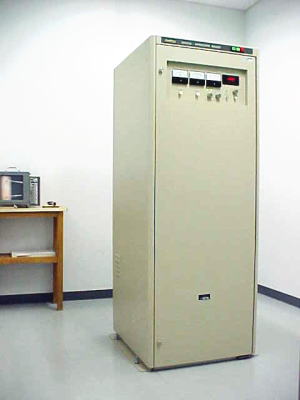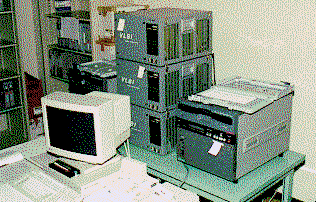
VLBI System

VLBI is a powerful technique capable of measuring precise differences of the arrival times of the same radio waves at distant places. It is used for studying the Earth's variable rotation and deformation, kinematics and physical state of radio sources such as QSO's, star- forming regions and late- type stars. In addition to observations, Mizusawa's VLBI system serves as a test bed for developing a new ultra-high precision VLBI system.

The antenna is 10 m in diameter and designed for receiving radio signals at frequency bands of 2 and 8 GHz (dual), 22 GHz and 43 GHz. The surface accuracy is 0.34 mm(rms). The digital control system drives the antenna at a speed of 3 degrees per second without any overshoot. This speed is particularly important for geodetic VLBI observations.

The backend system consists of a 16-channel video converter, a K-4 high-speed digital recorder and a hydrogen-maser frequency standard with a stability of 1.6 x 10E-15.

NAOCO (New Advanced One unit COrrelator), developed at the NAO, is used for correlating the VLBI data recorded on the tapes. This transportable correlator has many advanced features required for modern correlators such as cyclic processing with a high-speed correlation unit enabling both 1-channel processing with an ultra-wide bandwidth and 16-channel processing with a 2 MHz bandwidth, and 2-bit quantization, and 512 delay lines.
